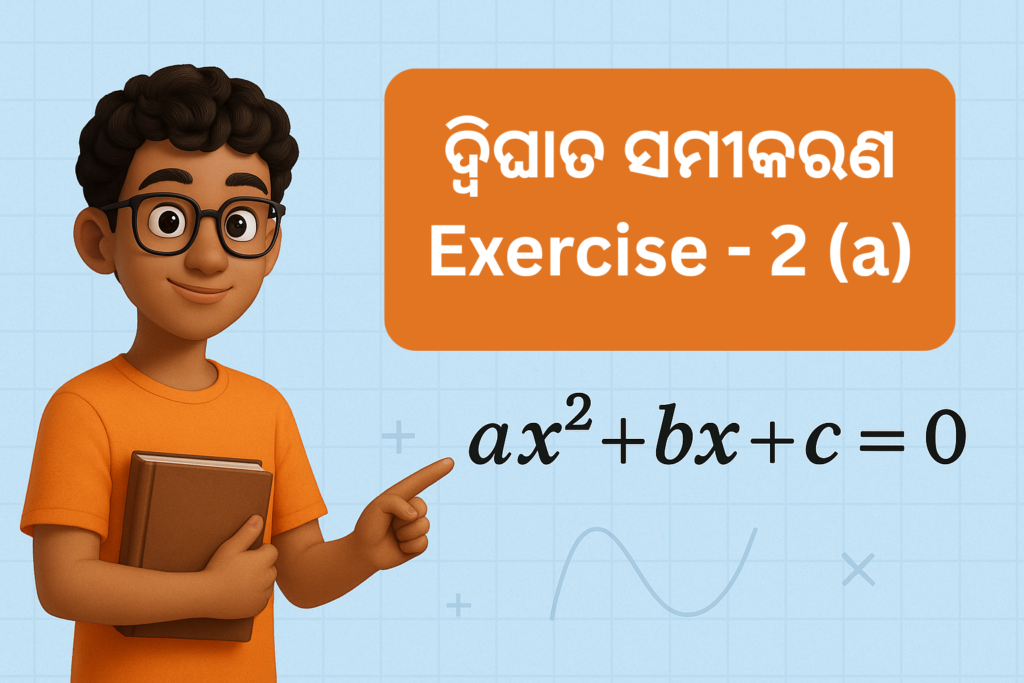Welcome to ePathshala!
Let’s understand one of the most important and scoring chapters of Class 10 Mathematics — Quadratic Equations. This topic is essential for your board exam and forms the base for higher classes and competitive exams.
What is a Quadratic Equation?
A quadratic equation is a polynomial equation of degree 2. It is written in the form:
ax²+bx+c=0, where:
a,b,c are real numbers and a≠0
✅ Important: If a=0, then the equation becomes linear, not quadratic
🎯 Examples of Quadratic Equations
- 2x²+3x+1=0
- x²−4x=0
- 3x²+7=0
Non-example:
- 5x+2=0, This is not a quadratic equation (it’s linear).
How to Identify a Quadratic Equation?
Look for:
- The highest power of the variable (x) is 2.
- The equation is equal to 0.
Tip: Rearrange terms if needed. For example
x(x−3)=10 becomes x²−3x−10=0
Methods to Solve a Quadratic Equation
1️⃣ Factorisation Method
This method splits the middle term to factorise the quadratic expression
Example:
x²- 5x + 6 = 0
=> x² -2x-3x+6 = 0
=> x(x-2) -3(x-2)=0
=>(x-2) (x-3) = 0
=> x= 2 or x =3
2️⃣ Completing the Square
🔹 Method 1: When the Coefficient of x² is 1
This is used when the quadratic equation is already in the form:
x² + bx + c = 0
✅ Steps:
1. Move the constant term c to the right side:
x² + bx = -c
2. Take half of the coefficient of x, square it, and add to both sides:
x² + bx + (b/2)² = -c + (b/2)²
3. Write the left-hand side as a perfect square:
(x + b/2)² = RHS
4. Take square root on both sides:
x + b/2 = ±√RHS
5. Solve for x.
🔹 Method 2: When the Coefficient of x² is NOT 1
Used when the equation is in the form:
ax² + bx + c = 0
✅ Steps:
1. Divide the entire equation by a:
x² + (b/a)x + (c/a) = 0
2. Move the constant term to the other side:
x² + (b/a)x = -c/a
3. Take half of the coefficient of x, square it, and add to both sides:
x² + (b/a)x + (b/2a)² = -c/a + (b/2a)²
4. Left-hand side becomes a perfect square:
(x + b/2a)² = RHS
5. Take square root on both sides and solve for x:
x = -b/2a ± √(b² - 4ac)/2a
3️⃣ Quadratic Formula
x=(−b±√b2−4ac)/2a
This is the most universal method and works for every quadratic equation.
🔍 Discriminant – Very Important!
The discriminant (D) is the value inside the square root of the quadratic formula: D=b²−4ac
- If D>0: Two real and distinct roots
- If D=0: Two real and equal roots
- If D<0: No real roots (imaginary roots)
✅ Summary
| Form | ax²+bx+c=0 |
| Methods | Factorisation, Completing Square, Quadratic Formula |
| Roots | Real or Imaginary based on Discriminant |
| Use | Algebra, Physics, Business, and more |
🎥 Watch our Full Video on Quadratic Equations
📌 Quick Practice
Solve:
1. x ²−7x+10=0
2. x ²+3x−5=0
Tell us your answers in the comments below



